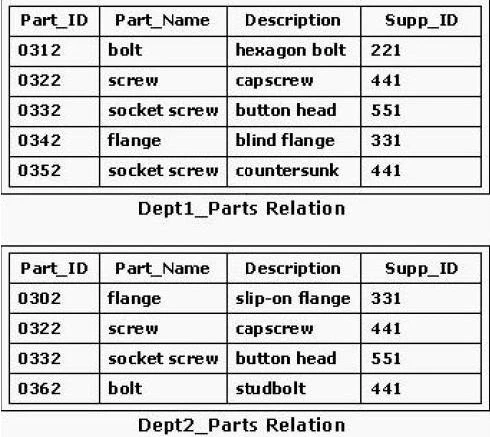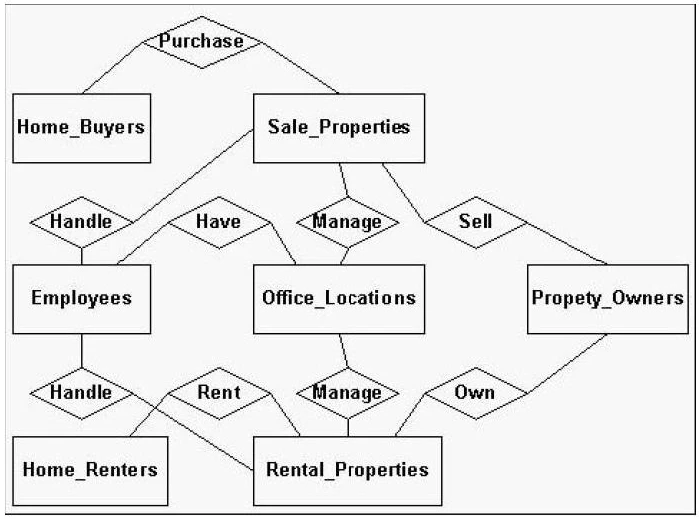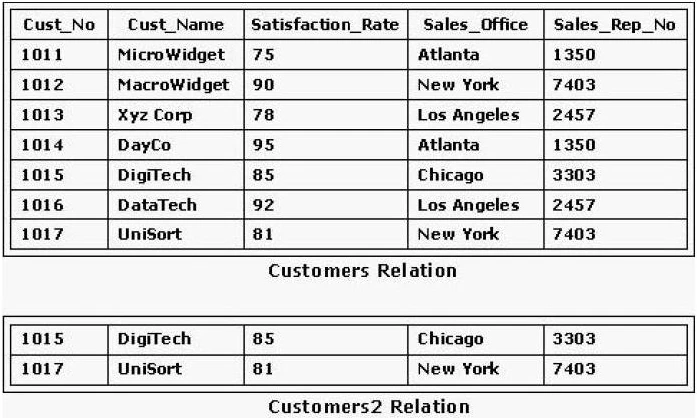

The SQL statement that would create a set difference of the two relations with the widest variety of Structured Query Language dialects is: SELECT * FROM Dept1_Parts WHERE Part_ID NOT IN (SELECT Part_ID FROM Dept2_Parts). This statement uses the NOT IN clause, which is widely supported across different SQL dialects, to filter out rows from Dept1_Parts where the Part_ID exists in Dept2_Parts.
Location and Res_Name are all represented by variable-length strings with a maximum of 20 characters.
Which SQL statement best implements the RESIDENT relation shown in this diagram?

The correct SQL statement should ensure that 'R_ID' is not null and is set as the primary key, 'Room_Num' is an integer, 'Res_Name' is a variable-length string with a maximum of 20 characters, and 'Building_ID' is not null with a foreign key constraint referencing 'Building_ID' in the BUILDING table. Option D meets all these requirements.
A transaction describes one or more database operations that are executed as a single unit. Transactions ensure that either all operations within the unit are completed successfully or none are, maintaining the integrity of the database.


The correct SQL statement to return the Customers2 relation from the Customers relation is: SELECT * FROM Customers WHERE Satisfaction_Rate >= 80 AND Satisfaction_Rate <= 89. The Customers2 relation includes records where the Satisfaction_Rate is between 80 and 89 inclusive (85 and 81 in this case). The options that involve satisfaction rates of exactly 80 or 90, or using the BETWEEN syntax without proper boundaries, are incorrect.